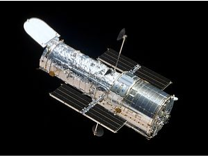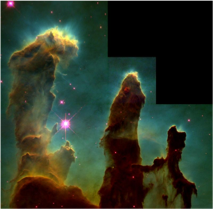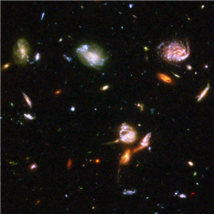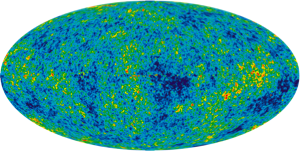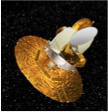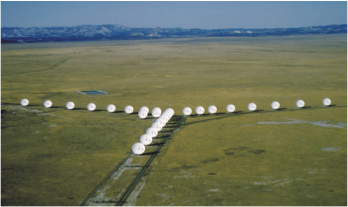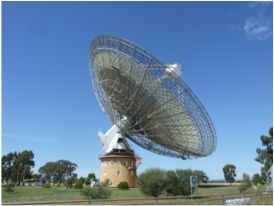
LIGHT & ASTRONOMY

Now that we have a telescope that can detect microwave radiation, I would here like to link how astronomers can use different wavelengths of light (including microwaves) to study the Universe. This requires a prior understanding of Waves, the Electromagnetic Spectrum, and BlackBody Radiation. And so, this section will explain 1. Some of the basic physics behind Electromagnetic Radiation, and 2. How astronomy uses different types of light to study the Universe.
1. LIGHT
Waves:
A wave is a disturbance or oscillation through some medium. This medium could be air, water, or even the vacuum of space. The basic idea behind waves is that they carry energy and information.


Mechanical waves require a physical medium through which to travel (for example, water waves travel through – yes you guessed it! - water. However, light waves are able to travel through a vacuum – one could think of a vacuum as being the fabric of space and time itself. These light waves travel at the speed of light, denoted by “c”.
Terminology to describe waves:
Wavelength (l) = distance between two like points on a wave, denoted by “l”
Amplitude (A) = height of the wave with respect to its undisturbed state, denoted by “A”
Period (T) = time for one full wavelength to pass, denoted by “T”
Frequency (f) = # waves / time (1/T), denoted by “f”
Question: What is the velocity of a wave?
Answer: We know that velocity = distance/time
For a wave, distance = wavelength, and T = 1/f
Therefore, the velocity of a wave is described by:
v = l * f
Light Waves:
Question: What is the velocity of a light wave?
Answer: Recall that light waves travel at a constant speed, c (in a vacuum)
Therefore, a light wave can be described by the equation:
c = l * f
Light waves are described by something called the Electromagnetic (EM) Spectrum – the name given to a bunch of types of radiation which are related by wavelength (equivalently, frequency). Examples of EM radiation are radio waves, microwaves, infrared waves, visible light, ultraviolet light, x-rays, and gamma rays. All of these types of radiation we call “light”.

Photo: NASA, from Flickr, Creative Commons
More in depth: Light waves are created by the electric and magnetic fields described by Maxwell’s Equations – these field are self sustaining, and so light can travel through a vacuum.
All objects with a temperature above absolute zero emit ALL forms of Electromagnetic Radiation. This is because all objects with a temperature have many molecules moving and vibrating around – and (this is a bit of a simplification) when these molecules move around, they emit radiation in the form of EM waves. “Blackbody Curves” describe this phenomena. Depending on the temperature of the object, different proportions of radiation are emitted - one specific type of radiation is called the “peak” radiation. Wikipedia has a rather good discussion of blackbody radiation: http://en.wikipedia.org/wiki/Black_body
Now that we know that “hot” objects emit radiation in the form of EM waves (light waves), we are ready to understand how astronomy is done by using different wavelengths of light!
2. MULTI-WAVELENGTH ASTRONOMY:
Photo: NASA, Creative Commons
In the 17th Century, Italian scientist Galileo Galilei revolutionized astronomy by turning a spyglass, an instrument that makes distant objects appear closer, towards the night sky. Thus this began the era of the optical telescope, an era that continues to this day. However, in the 20th Century, astronomy again went through a revolution as humans began to study the Universe using various types of light. Along with the optical spectrum, astronomers started the use the radio, microwave, infrared, ultraviolet, x-ray, and gamma-ray light coming from distant sources in the Universe.
As we learned in the last section, since different objects in the Universe have a temperature, we can study them by looking at the radiation they emit. Furthermore, looking at the Universe through different wavelengths allows us to get a more detailed description than if we just had access to the visible band.
Below are a list of the different types of light. I have included in this description examples of astronomical sources, a picture of a telescope that uses that wavelength of light, and a picture of some object taken by that telescope. For all of these telescopes, angular resolution is a function of the size of the dish (longer wavelengths require a larger dish).
Gamma Ray:
The first gamma-ray sources were found in the 1960’s - they were solar flares. Today, gamma-ray telescopes are generally above the Earth’s atmosphere. This is because the atmosphere absorbs some gamma radiation, making it extremely difficult to study from a ground based telescope.
Astronomical Sources: supernova explosions, the Sun, creation of black-holes, decay of radioactive materials.
Fermi Telescope: http://fermi.gsfc.nasa.gov/
Sun Gamma-Ray: http://www.nasa.gov/images/content/188428main_eitbigflare_lg.jpg
X-Ray:
Almost all X-Ray radiation is absorbed by the Earth’s atmosphere. This means that x-ray telescopes must be taken to a high altitude (either space based telescopes, or balloons).
Astronomical Sources: AGN’s, supernova remnants, stars, white dwarves, black holes, neutron stars, the Moon, the Sun
Chandra Telescope: http://en.wikipedia.org/wiki/Category:Chandra_X-ray_Observatory
Cat’s Eye Nebula: http://chandra.harvard.edu/photo/2008/catseye/catseye.jpg
Ultraviolet:
Similar to X-Rays and Gamma Rays, the majority of UV rays are absorbed by the atmosphere. Again, most UV telescopes are space based.
Astronomical Sources: Hotter objects in early stages of evolution (ie. star formation as seen in the galaxy below).
Galaxy: http://www.jpl.nasa.gov/spaceimages/details.php?id=PIA10374
GALEX Telescope: http://www.nasa.gov/missions/deepspace/galex_mission.html
Visible:
The most common way to study the cosmos (also the light that we see with out eyes!). Includes spectroscopy (determining element composition of an object), and photometry (analyzing light).
Astronomical Sources: Stars, galaxies, planets... basically everything! But does get blocked by dust easily.
Hubble: http://www.jpl.nasa.gov/news/news.php?feature=569
Eagle Nebula: http://nssdc.gsfc.nasa.gov/photo_gallery/photogallery-astro-nebula.html
Infrared:
First detection was the Sun in the early 1900’s. Is useful for probing sources that are blocked by dust in the optical regime. Often the same telescopes that study visible light can also study infrared.
Astronomical Sources: See “visible”
UDF: http://upload.wikimedia.org/wikipedia/commons/f/f3/Hubble_Ultra_Deep_Field_part_d.jpg
Hubble: http://www.jpl.nasa.gov/news/news.php?feature=569
Microwave:
A fortuitous discovery in 1965 by Penzias and Wilson! See http://www.esa.int/SPECIALS/Planck/SEMTS20YUFF_0.html for details. This is the wavelength of light that my telescope operates in!
Astronomical Sources: Cosmic Microwave Background (CMB).
CMB Photo: http://upload.wikimedia.org/wikipedia/commons/2/2d/WMAP_2010.png
WMAP Photo: http://science.nasa.gov/missions/wmap/
Radio:
First detection was made in the 1930’s by Karl Jansky, observing the Milky Way (another fortuitous discovery!). Can be done by single dish instruments (ie. Arecibo), or arrays (a technique called interferometry).
Astronomical Sources: Sun, Jupiter, Sag A*, AGN’s, Merging Galaxies (to study the gas), Supernova Remnants, CMB.
Quasar Photo: http://www.cv.nrao.edu/course/astr534/ExtraGalactic.html
Parkes Photo: From Flickr, Creative Commons
VLA Photo: http://www.cv.nrao.edu/course/astr534/Interferometers2.html







